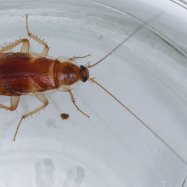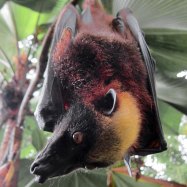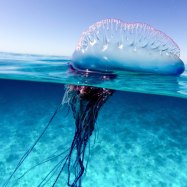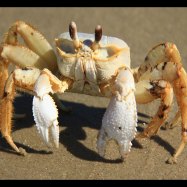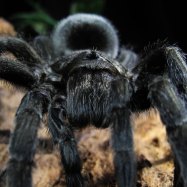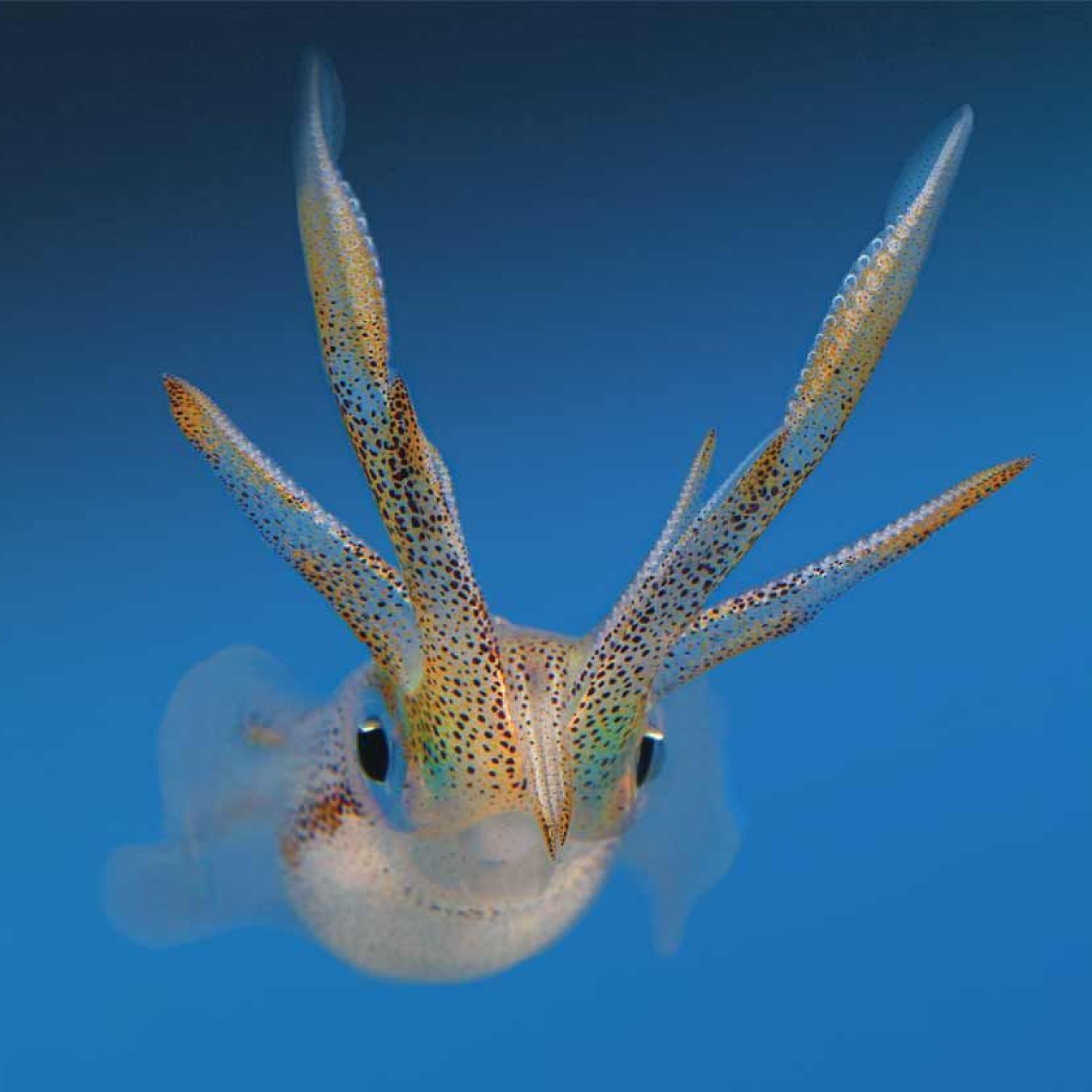
Bigfin Reef Squid
The Bigfin Reef Squid is a truly fascinating aquatic creature, belonging to the category Animals B. These intelligent creatures can reach up to 60cm in length and can be found in tropical waters around the world. Their unique body shape allows them to move swiftly and gracefully through the ocean. Have you ever seen one in the wild?
Animal Details Summary:
Common Name:
Kingdom:
Habitat:
The Magnificent Bigfin Reef Squid: A Master of Camouflage and Intelligence
Amidst the vast expanse of the ocean lies an extraordinary creature that is unlike any other. With its remarkable abilities, the Bigfin Reef Squid has captured the hearts and imagination of marine enthusiasts and scientists alike. Its strange and captivating features have made it a subject of fascination, earning its well-deserved popularity in the underwater world.Scientifically known as Sepioteuthis lessoniana, the Bigfin Reef Squid belongs to the kingdom Animalia, phylum Mollusca, class Cephalopoda, and order Teuthida Bigfin Reef Squid. It is a member of the family Loliginidae, which includes other cephalopods such as the cuttlefish and the squid. This magnificent creature can be found in various parts of the world, primarily in the Pacific and Indian Oceans, and the waters between East Africa and Hawaii.
This article will take you on a deep dive into the fascinating world of the Bigfin Reef Squid, highlighting its unique characteristics, habitat, behavior, and more.
The Bigfin Reef Squid’s Habitat and Adaptations
The Bigfin Reef Squid is a highly adaptable predator that can be found in a wide range of habitats, from shallow coral reefs to deep, open waters. They are most commonly found in the coastal regions of the Indo-Pacific region, including Australia, Japan, and the Maldives. These squids prefer to live in areas with warm waters, a stable temperature, and a higher salinity level, making them more common in the tropics.One of the Bigfin Reef Squid’s most remarkable adaptations is its ability to change color and texture, making it a master of camouflage. Using specialized pigment cells called chromatophores, the squid can change its skin color, allowing it to blend in with its surroundings effortlessly. This ability helps them evade predators and hunt for prey, making them a highly skilled hunter in the underwater world Blue Belly Lizard.
The Bigfin Reef Squid also has a unique body shape that allows it to move swiftly in the water. It has an elongated body that tapers into a narrow tail, giving it a torpedo-like shape. Its fins, situated at both sides of its body, are used for propulsion, allowing it to dart through the ocean effortlessly. Along with its powerful siphon, which is used for jet propulsion, this squid can reach impressive speeds of up to 40 miles per hour.
Feeding Method and Diet
The Bigfin Reef Squid’s hunting technique is as impressive as its physical adaptations. Like most cephalopods, it has a beak-like mouth used for devouring its prey. The squid feeds on a variety of small fish, crustaceans, and other mollusks, using its sharp beak to tear through their bodies. It also has a long and retractable tentacle, used to capture prey and bring it closer to its beak for consumption.What’s even more astounding is how the Bigfin Reef Squid hunts as a team. They are often seen in large groups, with each individual performing a specific role in the hunt. Some squids will act as spotters, while others will distract the prey, creating chaos and confusion, making it easier for the others to capture their meal. This advanced level of cooperation and strategy showcases the intelligence and social behavior of these magnificent creatures.
Intelligence and Communication
The Bigfin Reef Squid is a highly intelligent creature and is believed to have the largest brain-to-body ratio among all invertebrates. Their intelligence is evident in their behavior, such as their problem-solving skills, communication abilities, and complex hunting techniques. These squids also have a unique way of communicating with each other, using a combination of changing colors, patterns, and even body language.Furthermore, studies have shown that the Bigfin Reef Squid is not only capable of learning but also displays memory retention. In one experiment, squids were trained to hunt for food in a chamber with a specific color, and even after 24 hours, they managed to remember which chamber contained their food. This level of intelligence and learning is nothing short of impressive for a creature without a backbone.
The Bigfin Reef Squid in the World of Marine Biology
Being a highly adaptable and intelligent creature has made the Bigfin Reef Squid a popular subject of study in the field of marine biology. Scientists continue to be amazed by their unique abilities and are constantly learning more about their behavior, communication, and adaptation skills.Moreover, the Bigfin Reef Squid has also made its way into popular culture. In the world of aquariums, these squids are often displayed for the public to see, showcasing their beauty and intriguing behavior. Their popularity has also led to them being featured in numerous books, documentaries, and even video games.
Conservation and Sustainability
The Bigfin Reef Squid is not considered a threatened species, and its population is stable. However, with the increase in human activities such as overfishing and pollution, their habitats are at risk. These creatures play a crucial role in the ecosystem, and if their numbers were to decline, it would have a significant impact on other marine species.Therefore, it is essential to raise awareness about sustainable fishing practices and the harmful effects of pollution on marine life. Efforts are also being made to protect the coral reefs, which are home to many species, including the Bigfin Reef Squid. By taking these steps, we can ensure a healthy and thriving ocean ecosystem for future generations to appreciate and enjoy.
Final Thoughts
In conclusion, the Bigfin Reef Squid is an extraordinary creature that has captivated the hearts and minds of many. Its unique adaptations, intelligence, and social behavior make it stand out in the underwater world, and its popularity only continues to grow. By learning more about this magnificent creature, we can appreciate the wonders and diversity of the ocean and work towards preserving it for the generations to come.So, the next time you take a dive into the ocean, keep an eye out for this master of camouflage. Who knows, you might just catch a glimpse of this incredible creature in its natural habitat.

Bigfin Reef Squid
Animal Details Bigfin Reef Squid - Scientific Name:
- Category: Animals B
- Scientific Name:
- Common Name:
- Kingdom:
- Phylum:
- Class:
- Order:
- Family:
- Habitat:
- Feeding Method:
- Geographical Distribution:
- Country of Origin:
- Location:
- Animal Coloration:
- Body Shape:
- Length:
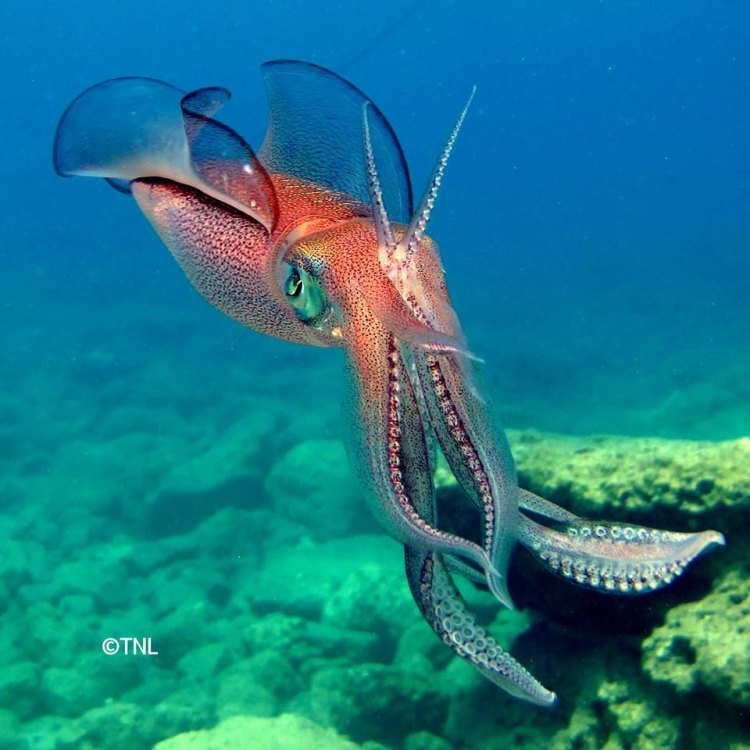
- Adult Size:
- Average Lifespan:
- Reproduction:
- Reproductive Behavior:
- Sound or Call:
- Migration Pattern:
- Social Groups:
- Behavior:
- Threats:
- Conservation Status:
- Impact on Ecosystem:
- Human Use:
- Distinctive Features:
- Interesting Facts:
- Predator:
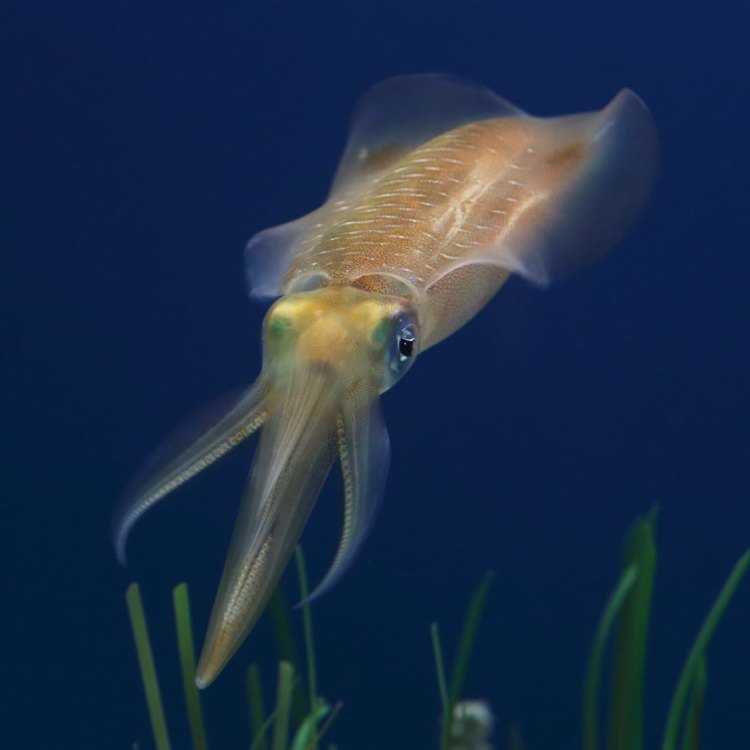
The Mysterious and Majestic Bigfin Reef Squid: Exploring the Secrets of the Deep
The ocean is a vast and wondrous place, filled with a plethora of fascinating creatures that continue to baffle and captivate us. Among these creatures is the enigmatic Bigfin Reef Squid, a species that is as mysterious as it is majestic. From their unique reproductive behavior to their impressive size, there is much to be discovered about these fascinating cephalopods. But with threats to their existence and a relatively short average lifespan, there is also much that needs to be understood in order to preserve and protect this intriguing species PeaceOfAnimals.Com.Let's delve into the depths of the ocean and uncover the secrets of the Bigfin Reef Squid.
Adult Size and Average Lifespan
As their name suggests, the Bigfin Reef Squid is a sizable species of squid, with individuals reaching lengths of up to three feet. This makes them one of the larger species of squid, falling behind only the giant squid and colossal squid in terms of size.
Despite their large size, these squids have a relatively short lifespan, typically living for only one to two years. This is due in part to their rapid growth rate, which allows them to reach full maturity within one year. However, in captivity, they have been known to live for up to five years.
Reproduction and Reproductive Behavior
The reproductive process of the Bigfin Reef Squid is a complex and fascinating one. Like other octopuses and squids, they are semelparous, meaning they reproduce only once before dying. This is in stark contrast to most other species in the animal kingdom, who have the ability to reproduce multiple times throughout their lifetime Budgerigar.
During mating, males transfer their spermatophores (packages containing sperm) to the female's mantle using a specialized arm called a hectocotylus. Once the female has received the spermatophores, she will store them until her eggs are fertilized, and then begin the process of laying them.
What sets the Bigfin Reef Squid apart from other squid species is their unique reproductive behavior. Instead of laying their eggs in clusters, as many other cephalopods do, these squids lay their eggs in a single strand. This strand can contain up to 1,000 eggs and is attached to a secure location using a sticky substance. This type of egg-laying is known as "singles spawn." The eggs then hatch within 3-4 weeks, with the larvae emerging from the egg strand as fully formed miniature squids.
Sound or Call
One of the most interesting and unique characteristics of the Bigfin Reef Squid is their ability to make sounds. These squids produce a series of clicking sounds, which are thought to be used as a form of communication between individuals. They create these sounds by rapidly contracting their muscles, which produces a clicking sound similar to that of a snapping fingers. This behavior is most commonly observed during mating, suggesting that it may play a role in reproductive behavior.
Migration Pattern and Social Groups
One of the lesser-known aspects of the Bigfin Reef Squid is their migration pattern. These squids are known to undertake a daily vertical migration, swimming from lower depths during the day to shallower waters at night. This behavior is thought to be a form of protection, as they are less susceptible to predators in the deeper waters during the day.
Bigfin Reef Squids are social animals, living and traveling in groups known as "schools." These schools can consist of hundreds of individuals, and it is believed that they use this group dynamic as another form of protection from predators.
Behavior and Threats
As with most creatures of the ocean, the behavior of the Bigfin Reef Squid is complex and multifaceted. They are curious and intelligent creatures, often displaying playful and inquisitive behavior. In captivity, they have been observed playing with toys, interacting with their environment, and even jousting with one another using their long tentacles.
Sadly, these fascinating creatures face numerous threats in the wild, including overfishing, pollution, and habitat destruction. They are also prone to becoming bycatch in commercial fishing nets, and their quick growth rate makes them a desirable food source for many marine predators.
Conservation Status and Impact on Ecosystem
The Bigfin Reef Squid is not a species that is currently evaluated for conservation status by the International Union for Conservation of Nature (IUCN). However, their populations are thought to be declining due to the various threats they face.
These squids play an essential role in the ocean's ecosystem, as both predator and prey. They consume a wide range of marine species, including small fish, crustaceans, and other squid species. This diet makes them an important part of the food chain, and any decline in their numbers could have ripple effects on the entire ecosystem.
Human Use and Distinctive Features
The Bigfin Reef Squid has been used by humans for centuries, both for food and as bait for fishing. Their large size and abundance make them a popular catch for commercial and recreational fishermen.
These squids have many distinctive features that set them apart from other squid species. As their name suggests, they have long, triangular fins that run along the entire length of their body, giving them a distinct and unique appearance. These fins are used for propulsion, allowing them to move through the water with agility and speed.
Interesting Facts and Predators
As with any species, there are many interesting facts and quirks about the Bigfin Reef Squid that are worth noting. For instance, they have the ability to change color and texture in a matter of seconds, making them highly adaptable to their surroundings and excellent at camouflage.
Despite their unique reproductive behavior, these squids face a significant threat from predators. Sharks, dolphins, and other larger marine animals often prey on them, while smaller fish consume their eggs and larvae.
The Bigfin Reef Squid: A Species Worth Protecting
With its intriguing reproductive behavior, impressive size, and complex social dynamics, the Bigfin Reef Squid is truly a mystery of the deep. But with threats to their existence, it is vital that we strive to understand and protect this species before it's too late. Through conservation efforts and a better understanding of their behavior and needs, we can ensure that these majestic creatures continue to thrive in the ocean for generations to come.
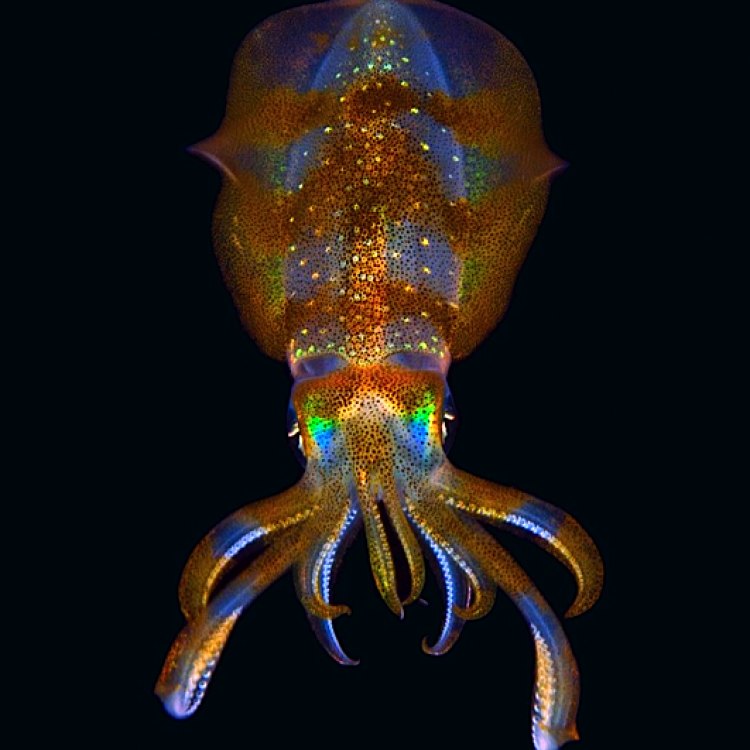
The Magnificent Bigfin Reef Squid: A Master of Camouflage and Intelligence
Disclaimer: The content provided is for informational purposes only. We cannot guarantee the accuracy of the information on this page 100%. All information provided here may change without prior notice.

